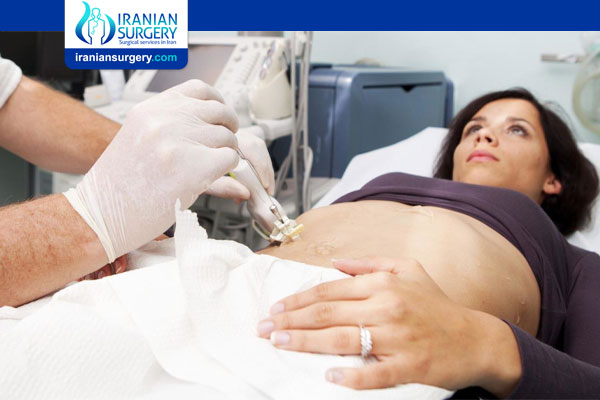
Colpotomy
A colpotomy, also known as a vaginotomy, is a procedure by which an incision is made in the vagina. This procedure is performed either to visualize pelvic structures or to perform surgery on the fallopian tubes or ovaries.
Role Of Colpotomy in Gynecologic Surgery
Several gynecologic surgery protocols require a colpotomy as part of the overall surgical procedure. It is performed whenever the surgeon needs to access the vagina. Several of these surgeries include:
. Tubal sterilization. Sterilization is a procedure that can be performed using either abdominal or vaginal procedures. When a vaginal procedure is selected by the surgeon, he performs a colpotomy and may also insert a culdoscope to locate the tubes (culdoscopy), and close them off.
. Removal of myomas. Myomas are fibroid tumors of the muscle tissue of the uterus and they are sometimes removed vaginally by colpotomy.
. Removal of pelvic cysts and masses. In one treatment variant, patients may undergo a laparoscopy followed by a colpotomy for the vaginal extraction of the pelvic cyst or mass.
. Hysterectomy. One technique used to surgically remove the uterus combines three steps, an initial laparoscopic stage, followed by a vaginal stage, and a final laparoscopic stage. The colpotomy is performed during the second step to deliver the uterus into the vagina.
. Dysmenorrhea. Separation of the uterosacral ligaments via colpotomy is an approach that has been used for the relief of dysmenorrhea (painful menstruation).
. Complications in pregnancy and childbirth. Colpotomy may be used in the management of difficult pregnancies and childbirths.
Colpotomy Procedure
A colpotomy is a type of incision that can be used during a vaginal sterilization procedure (the other type of procedure is called a culdoscopy). During a colpotomy tubal ligation, your healthcare provider makes an incision into the posterior vaginal fornix (the fancy medical word for the back of the vagina). This incision can be made horizontally (side to side) or vertically (up to down). Your surgeon will then insert an intrauterine sound through the incision and into the peritoneal cavity (the space within the abdomen that contains the intestines, the stomach, and the liver).
The intrauterine sound is just a medical instrument that is designed to help probe and open passages within the body—it helps your surgeon to correctly position the uterus and bring the fallopian tubes into view. Some surgeons may use an endoscope (a small, telescope-like medical instrument with a light). Your surgeon will then take your fallopian tubes out through the incision and into the vagina. Your fallopian tubes are then closed/ligated—they can be tied, clipped, and/or sealed shut. Finally, your healthcare provider will put the fallopian tubes back into place, and your incision is stitched shut.
A tubal ligation that includes a colpotomy incision takes about 15 to 30 minutes. Most women are able to go home the very same day. This type of procedure is considered to be a permanent method of contraception.
Colpotomy Aftercare
Aftercare for colpotomy is associated with the overall surgery that required the colpotomy.
For example, if a colpotomy is performed for tubal ligation (female sterilization), the procedure takes only 15–30 minutes and women usually go home the same day. It may take a few days at home to recover. Sexual intercourse is usually postponed until the colpotomy incision is completely healed, and as advised by the doctor. The healing process usually requires several weeks and there are no visible scars. In the case of a colpotomy performed for myoma removal, aftercare is more elaboate with the patient's vital signs monitored in the recovery room until she regains consciousness.
Colpotomy Benefits
A major advantage of having a colpotomy during your tubal ligation is that there are no incisions in your abdomen. This type of tubal ligation can also offer additional benefits. A colpotomy tubal ligation can be a safer option for women who:
. Are obese
. Have a retroverted uterus (a uterus that tilts back instead of the front)
. Have a history of abdominal wall/hernia repairs
Colpotomy Risks
There are not as many surgeons in the United States who are trained to perform a colpotomy as a tubal ligation procedure. Research is now showing that this method may be safer than originally thought. But many surgeons prefer to do abdominal tubal ligations because the complication rates associated with colpotomy tubal ligations appear to be twice as high, and the effectiveness rates may be slightly lower. Colpotomy tubal ligations have also been linked to higher infection rates. Some surgeons will provide you with antibiotics to take after a colpotomy to help prevent infection. A colpotomy may also be more difficult to perform because it requires a woman to be in a lithotomy position (your legs are in stirrups) while under local anesthesia.
About Iranian Surgery
Iranian surgery is an online medical tourism platform where you can find the best gynecological surgeons in Iran. The price of Colpotomy in Iran can vary according to each individual’s case and will be determined by an in-person assessment with the doctor.
For more information about the cost of Colpotomy in Iran and to schedule an appointment in advance, you can contact Iranian Surgery consultants via WhatsApp number 0098 901 929 0946. This service is completely free.
Source:
10 common questions about Colpotomy procedure steps
[kkstarratings]

